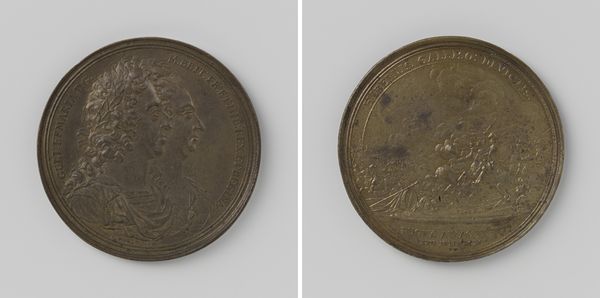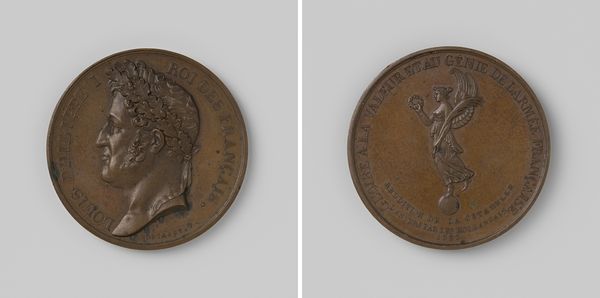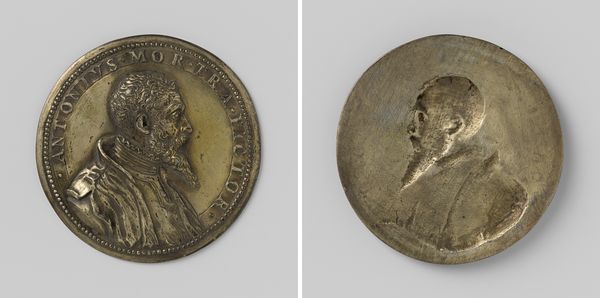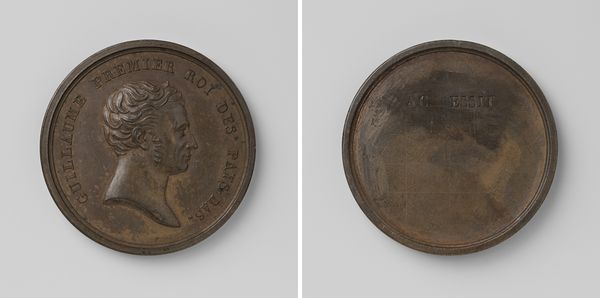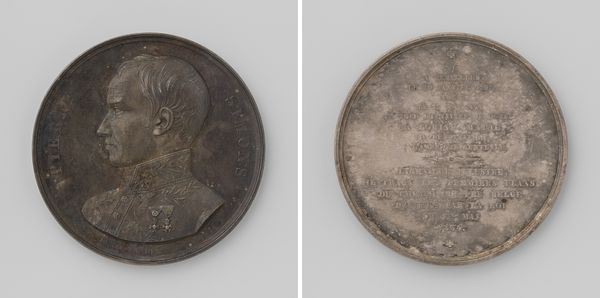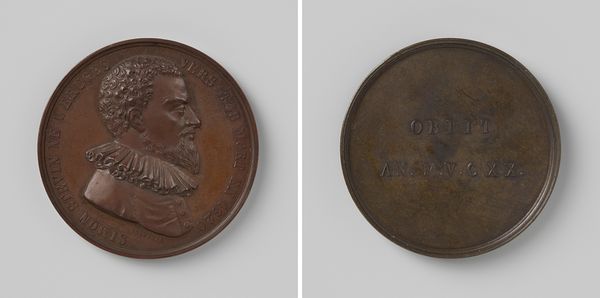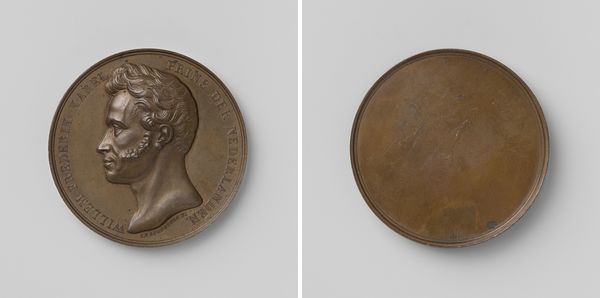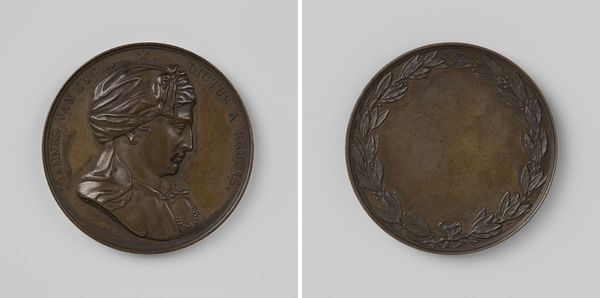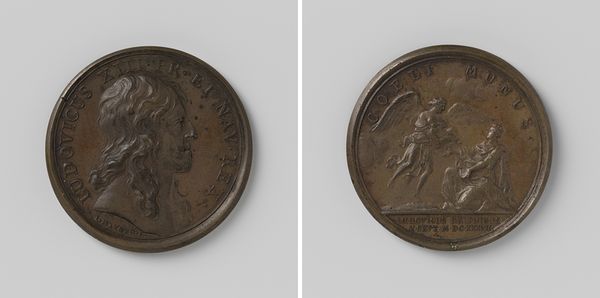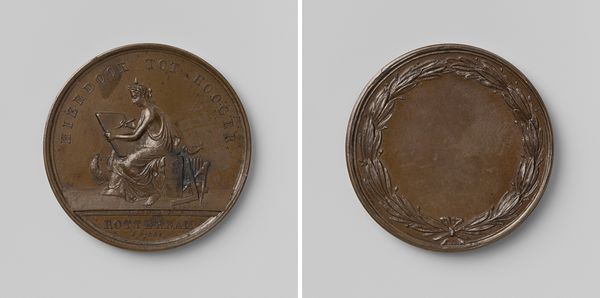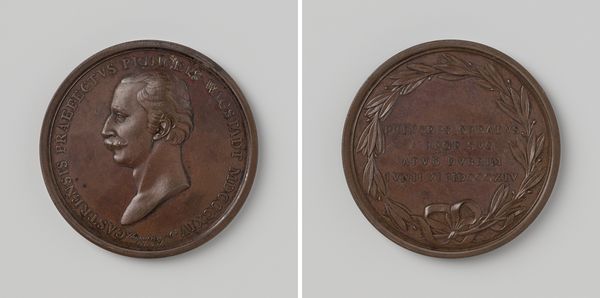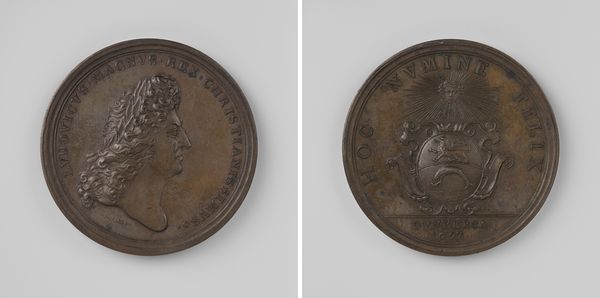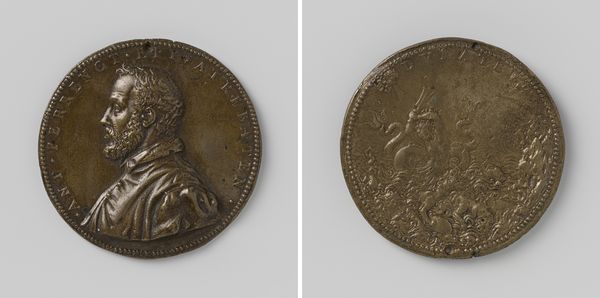
Bezoek van Willem II aan 's Rijks Munt te Utrecht 1841 1840
0:00
0:00
metal, bronze, sculpture
#
portrait
#
medal
#
neoclacissism
#
metal
#
sculpture
#
bronze
#
sculpture
#
history-painting
Dimensions: diameter 3.8 cm, weight 29.34 gr
Copyright: Rijks Museum: Open Domain
Editor: Here we have “Bezoek van Willem II aan 's Rijks Munt te Utrecht 1841”, created by David van der Kellen around 1840. It’s a bronze piece and takes the form of a medal. It feels very…official, somehow. What are your thoughts? Curator: Considering the material, bronze, we can think about where this metal comes from, how it's extracted, who is doing the labor to create this object? Even the design; a king's portrait implies a specific production context of political power and control. What kind of social narratives do you think bronze as a material conveys here, especially within the context of a royal visit? Editor: It feels very tied to tradition and permanence – bronze suggests something meant to last. I suppose it's a way of cementing the king's image and the event in history? Curator: Precisely! Medals like this weren't just commemorative objects, but tools of nation-building. They were often distributed widely. Think about who had access to these images of power, who benefited from their production, and who was excluded. Were there other materials that might have accomplished the same symbolic representation, and what impact would that have? Editor: That's interesting... a less durable material would almost be a statement in itself. I hadn't considered the material choice as being part of the political statement. Curator: Exactly! And think about the circulation of these medals, how this imagery contributes to the idea of the king and his role. It’s not just the image, it's the whole network of production and consumption that matters. It represents resources and human efforts, shaped and presented in service of reinforcing established authority. Editor: So, it's less about the artistic merit, and more about the labor, context, and intent of making such a piece. That gives me a lot to think about. Thanks! Curator: And remember, even artistic merit can be tied to the resources and labor afforded to particular styles or subjects. Always consider the context of creation.
Comments
No comments
Be the first to comment and join the conversation on the ultimate creative platform.
